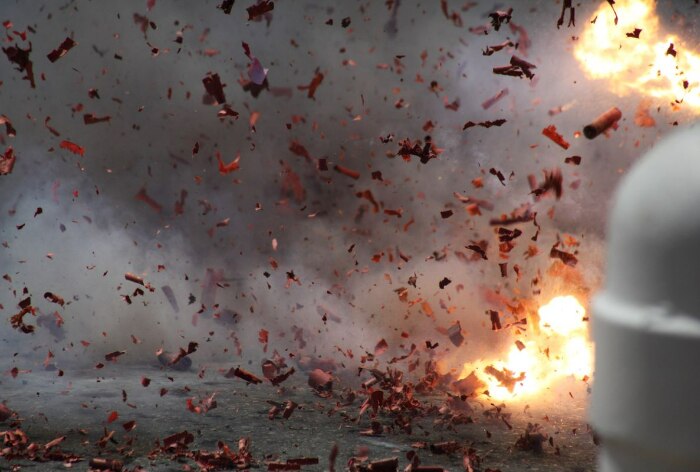
[ad_1]
The attack on the Mung Lai Hkyet displacement camp also wounded about 60 people.

Bangkok: Myanmar’s military was accused of launching an airstrike on a camp for displaced persons in the northern state of Kachin late Monday that killed more than 30 people, including 13 children, a human rights group and local media said. The attack on the Mung Lai Hkyet displacement camp in the northern part of Laiza, a town where the headquarters of the rebel Kachin Independence Army is based, also wounded about 60 people, a spokesperson for Kachin Human Rights Watch told The Associated Press on Tuesday.
Laiza is about 324 kilometers (200 miles) northeast of Mandalay, Myanmar’s second-biggest city.
The spokesperson, who asked to be identified only as Jacob for security reasons, said 19 adults and 13 children from the camp were killed by the airstrikes, which occurred around 11 p.m.
“We strongly condemn this inhumane killing. This action causes resentment among the Kachin people,” he said.
Kachin News Group, a local online news site, reported that more than 30 displaced persons were killed by the bombs dropped by jet fighters.
However, there was some uncertainty about how the attack was carried out, because it came suddenly and late at night. Other unverified media reports said the attack may have been carried out with drones or even artillery.
It was impossible to independently confirm details of the incident, though media sympathetic to the Kachin posted videos showing what they said was the attack’s aftermath, with images of dead bodies and flattened wooden structures.
Myanmar has been in turmoil since the military overthrew the elected government of Aung San Suu Kyi in February 2021, triggering widespread popular opposition. After peaceful demonstrations were put down with lethal force, many opponents of military rule took up arms, and large parts of the country are now embroiled in conflict.
The military government in the past year has stepped up the use of airstrikes in combat against two enemies — the armed pro-democracy Peoples Defense Forces, which formed after the 2021 takeover, and ethnic minority groups such as the Kachin that have been fighting for greater autonomy for decades.
The military claims it targets only armed guerrilla forces and facilities, but churches and schools have also been hit and many civilians killed or wounded. Artillery is also frequently employed.
The Kachin are one of the stronger ethnic rebel groups and are capable of manufacturing some of their own armaments. They also have a loose alliance with the armed militias of the pro-democracy forces that were formed to fight army rule.
In October last year, the military carried out airstrikes that hit a celebration of the anniversary of the founding of the Kachin Independence Organization, the political wing of the Kachin Independence Army, near a village in Hpakant township, a remote mountainous area 167 kilometers (103 miles) northwest of Laiza. The attack killed as many as 80 people, including Kachin officers and soldiers, along with singers and musicians, jade mining entrepreneurs and other civilians.
Monday night’s attack, not yet acknowledged by the military government, came just a few days before it is supposed to host an event in the capital, Naypyitaw, to mark the eighth anniversary of the signing of a ceasefire agreement between the previous military-backed government and eight ethnic rebel armies.
The larger ethnic rebel armies, including the Kachin and the Wa, refused to sign the ceasefire agreement.
[ad_2]